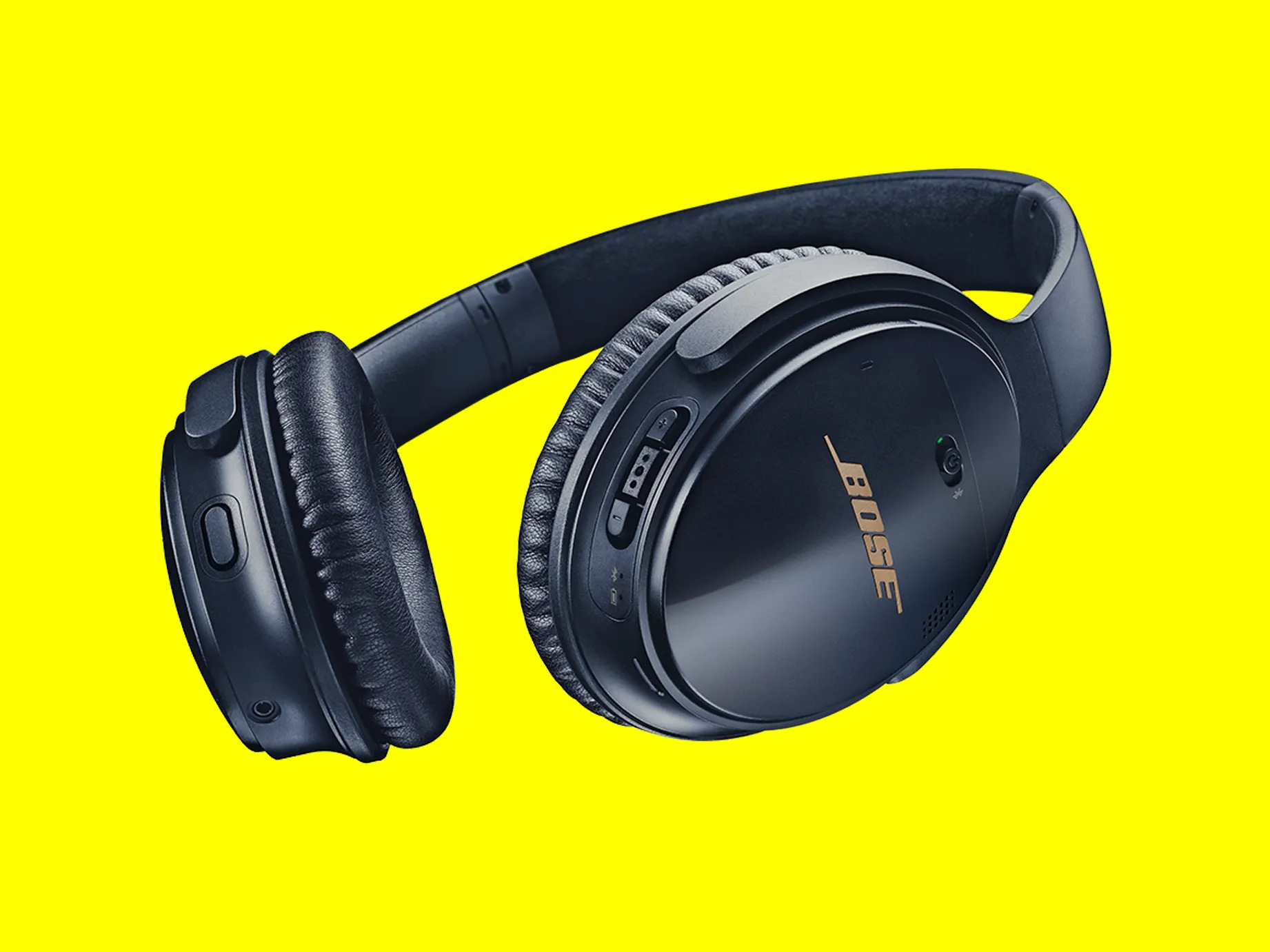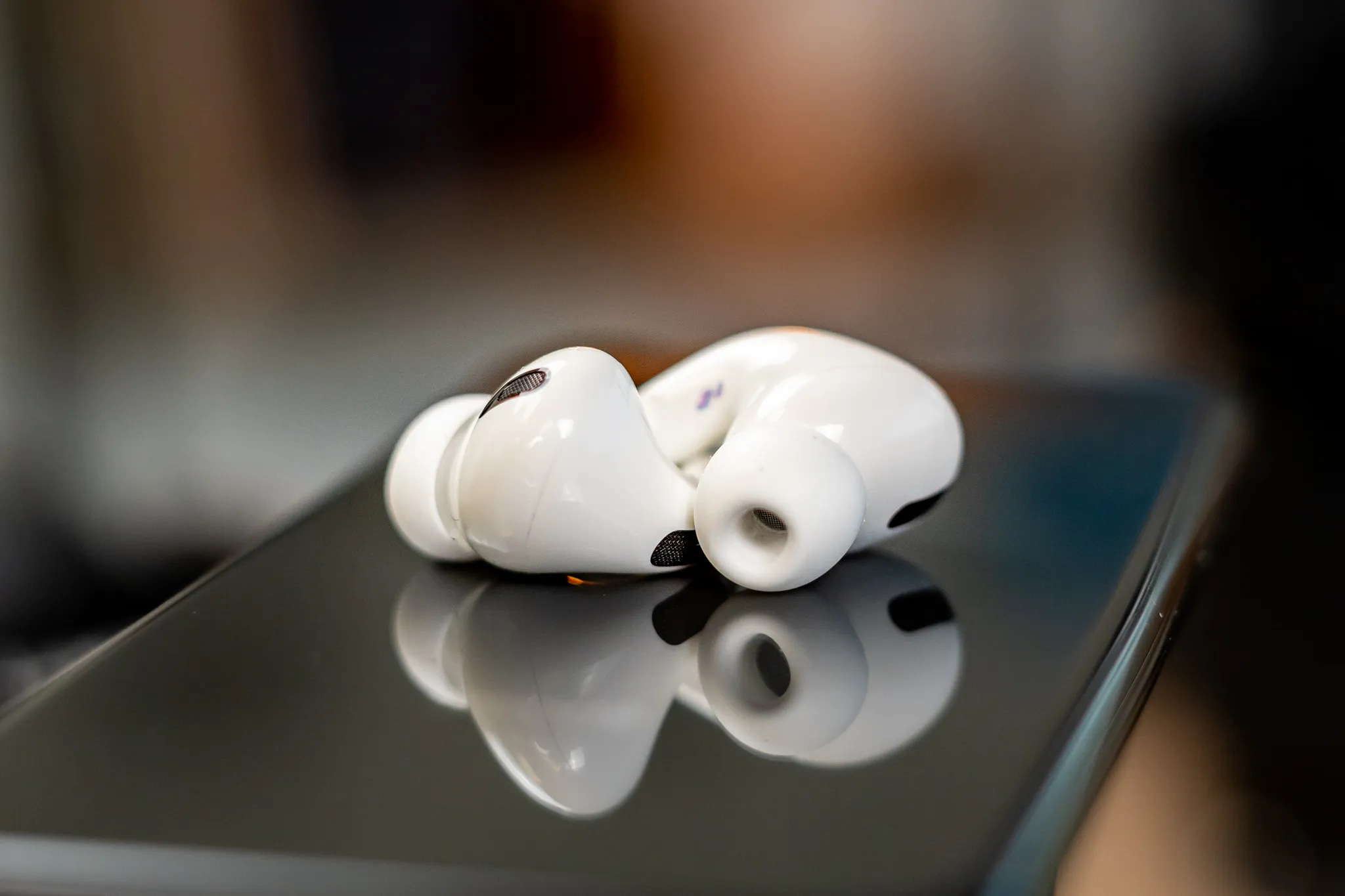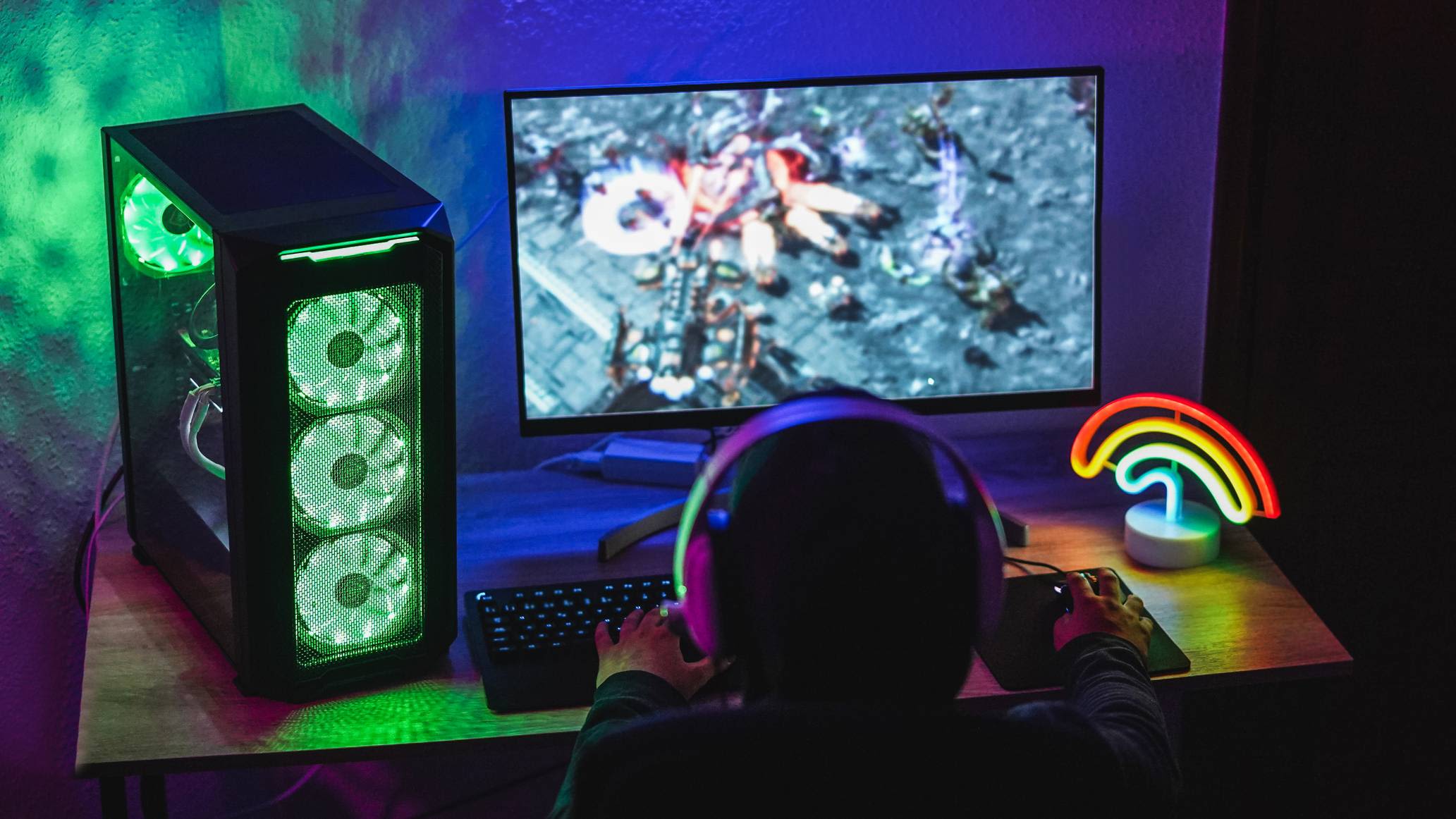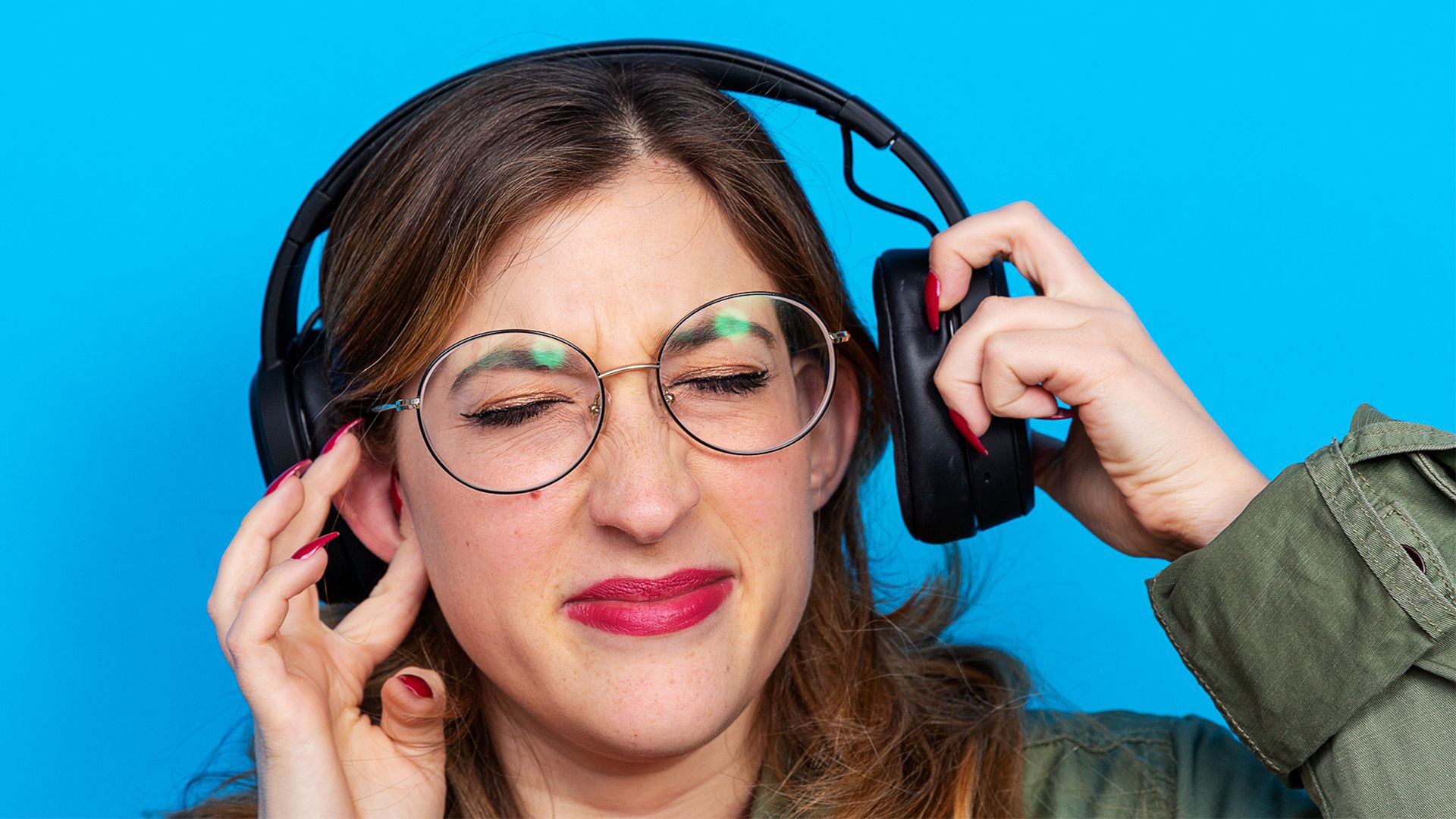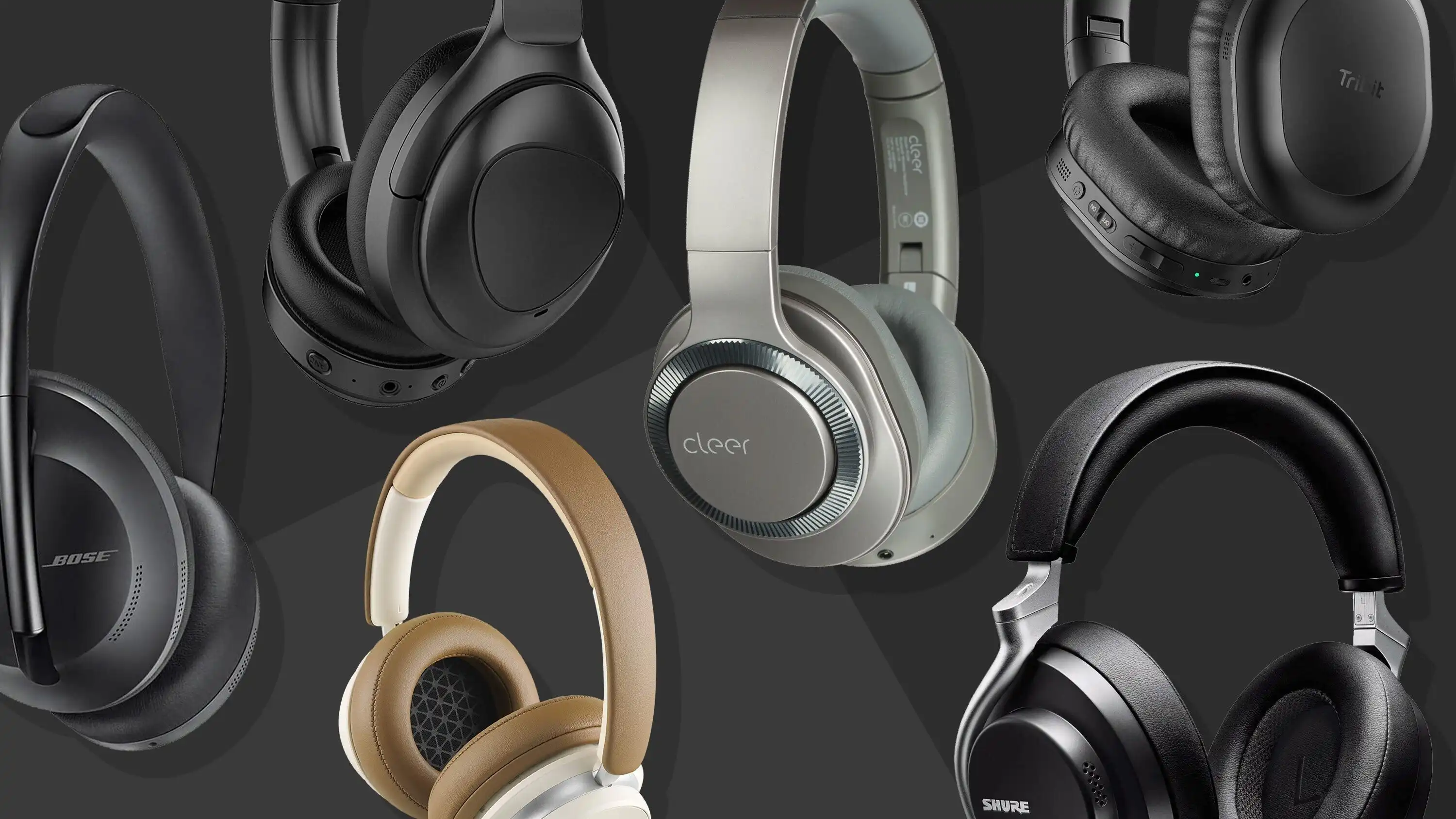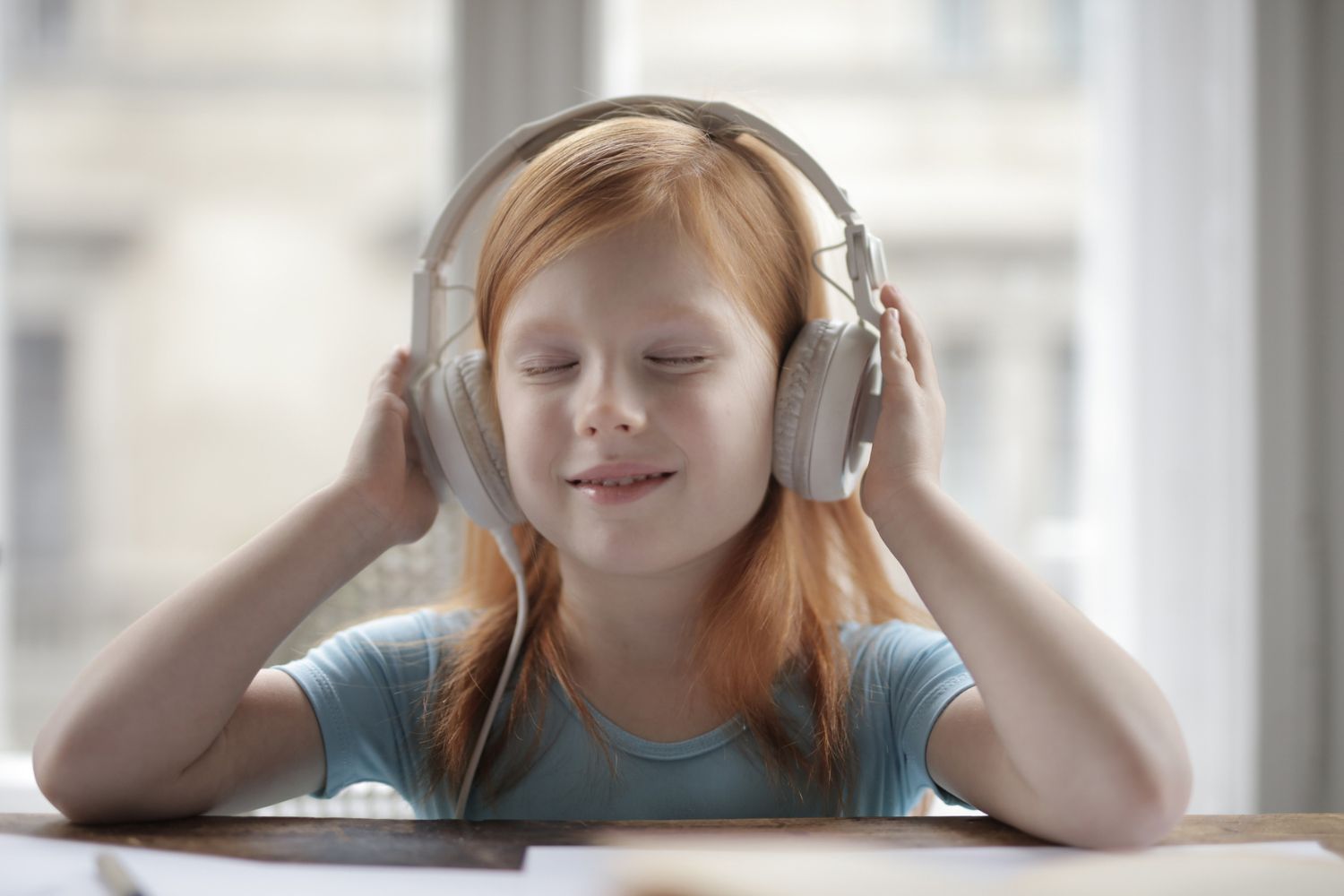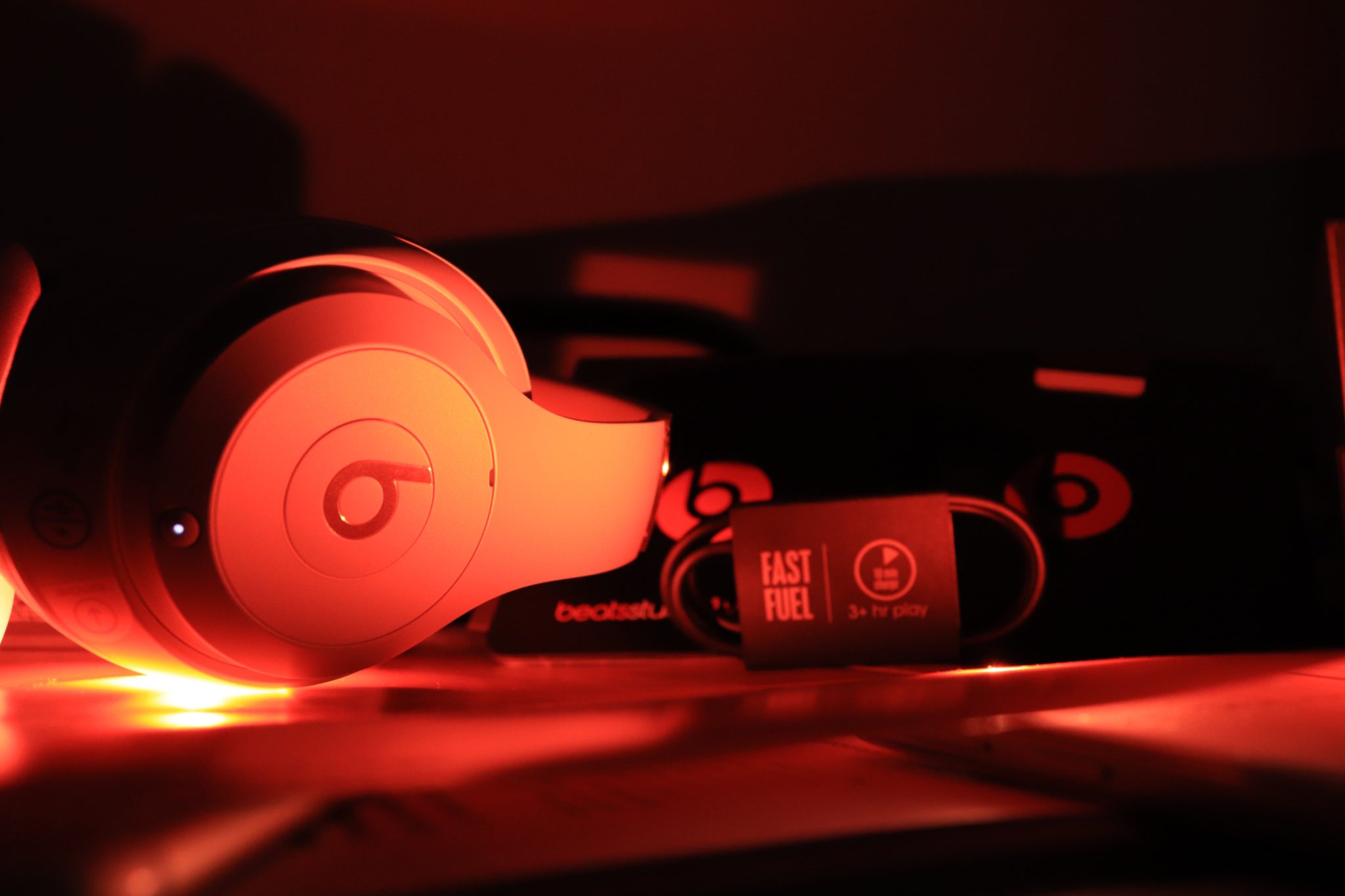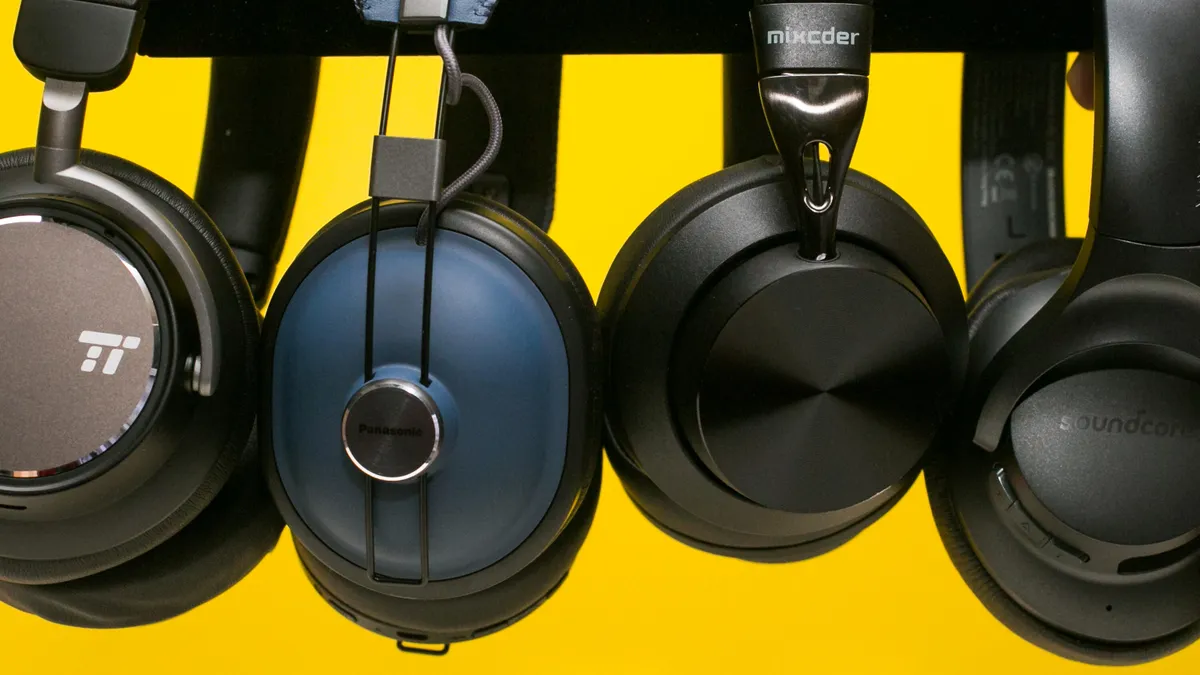Introduction
Noise cancelling headphones have become increasingly popular in recent years, and it’s no surprise why. These innovative devices offer a fantastic solution for those seeking peace and quiet in a noisy world. Whether you’re on a long flight, working in a bustling office, or simply trying to relax at home, noise cancelling headphones can help create a serene listening experience by blocking out unwanted sounds.
But have you ever wondered just how many decibels noise cancelling headphones can actually block? In this article, we’ll explore the concept of decibels and delve into the world of noise cancelling technology. We’ll uncover the factors that affect the effectiveness of noise cancellation, as well as the differences between active and passive noise cancelling. Furthermore, we’ll discuss the decibel levels typically blocked by noise cancelling headphones and explore the variations across different brands and models.
Additionally, we’ll paint a realistic picture of how noise cancelling headphones perform in real-life scenarios. After all, it’s crucial to understand the limitations of these devices before making an informed decision about which pair to invest in. Finally, we’ll provide some guidance on choosing the right noise cancelling headphones for your specific needs.
So, whether you’re a frequent traveler, an office dweller, or simply someone who enjoys the bliss of silence, this article will equip you with the knowledge you need to make an informed decision about noise cancelling headphones.
How Noise Cancelling Headphones Work
Noise cancelling headphones use a combination of advanced technology and clever engineering to block out unwanted sounds. Unlike regular headphones, which simply play audio into your ears, noise cancelling headphones actively work to eliminate background noise.
The primary mechanism behind noise cancellation is called “active noise control” or “active noise reduction”. It involves the use of microphones and electronic circuitry that captures ambient sounds and produces an inverse sound wave to cancel out the noise. This process is known as “destructive interference”. By emitting a sound wave with the same frequency but opposite phase as the incoming noise, noise cancelling headphones effectively neutralize the unwanted sound waves.
These headphones work best against continuous, low-frequency sounds, such as the hum of an airplane engine, traffic noise, or the constant rumble of a nearby air conditioner. The repetitive nature of these sounds allows the noise cancelling technology to generate an inverse sound wave with accuracy, resulting in an effective cancellation of the noise.
It’s important to note that noise cancelling headphones are not designed to block out all noise. They excel at reducing constant, low-frequency sounds, but they may not be as effective against sudden, high-frequency noises like a loud clap or a screeching alarm. However, some higher-end models do offer a degree of passive noise isolation, which can help minimize higher frequency sounds by physically blocking the entrance of noise.
Furthermore, noise cancelling headphones are also effective at reducing the stress and fatigue caused by prolonged exposure to noise. By creating a quieter environment, these headphones can help protect your ears and promote better concentration, relaxation, and overall well-being.
Now that we understand the basics of how noise cancelling headphones work, let’s explore the concept of decibels and their significance in noise cancellation.
The Concept of Decibels
Decibels, often abbreviated as dB, are the unit used to measure the intensity or loudness of sound. The concept of decibels allows us to quantify and compare the level of noise in our environment.
The decibel scale is logarithmic, meaning that each increase of 10 decibels represents a tenfold increase in sound intensity. For example, a sound measured at 40 decibels is ten times louder than a sound measured at 30 decibels. This logarithmic scale is necessary because the human ear has a non-linear response to sound, meaning we perceive a smaller difference in volume for larger changes in decibel level.
To give you a better understanding, let’s look at some examples of common sound levels. Normal conversation typically measures around 60 decibels, while a quiet library might register at about 40 decibels. A busy city street can range from 70 to 85 decibels, and a rock concert can reach a deafening 110 decibels or more.
When it comes to noise cancelling headphones, understanding decibels is crucial in determining the effectiveness of the noise cancellation. The higher the decibel level of the ambient noise, the more challenging it becomes to cancel out the sound completely. However, noise cancelling technology can still make a significant difference in reducing the perceived noise level, even in high dB environments.
It’s important to note that decibels are measured on a logarithmic scale, and the human perception of noise follows a similar non-linear pattern. This means that a reduction of 10 decibels is not perceived as half the loudness, but rather a noticeable decrease. For example, if background noise measures 80 decibels and noise cancelling headphones reduce it by 10 decibels, the perceived loudness may decrease by about half, making it much more pleasant and manageable.
Now that you understand the concept of decibels, let’s explore the various factors that can influence the effectiveness of noise cancelling headphones in blocking out unwanted sounds.
Factors Affecting Noise Cancelling Effectiveness
The effectiveness of noise cancelling headphones can vary depending on several factors. These factors contribute to how well the headphones can block out unwanted sounds and provide a quiet listening experience. Here are some of the key factors that influence noise cancelling effectiveness:
- Frequency range: Noise cancelling technology is most effective at blocking out low-frequency sounds, such as the rumble of an airplane engine or the hum of traffic. These sounds are easier to cancel out because their wavelengths are longer. However, noise cancelling performance tends to decrease as the frequency increases, especially in the higher frequency range.
- Fit and seal: A proper fit and seal between the headphones and your ears play a crucial role in the effectiveness of noise cancellation. If the headphones don’t fit properly or create a tight seal, external sounds may still leak in, reducing the effectiveness of noise cancellation. Some noise cancelling headphones come with adjustable headbands and earcup designs to achieve a secure fit for different head shapes and sizes.
- External noise levels: The amount of external noise in your environment can impact the effectiveness of noise cancelling headphones. In extremely loud environments, such as construction sites or busy train stations, noise cancelling technology may struggle to completely eliminate all sounds. However, it can still provide a significant reduction in noise, allowing for a more comfortable listening experience.
- Battery life and power: Noise cancelling headphones often require power to operate the noise cancellation feature. The battery life and power of the headphones can affect the effectiveness of noise cancellation. If the battery is low or the power source is weak, the noise cancelling performance may be compromised, resulting in reduced effectiveness.
- Quality of noise cancelling technology: Not all noise cancelling headphones are created equal. The quality of the noise cancelling technology used in the headphones can greatly impact their effectiveness. High-end models with advanced noise cancelling algorithms and multiple microphones tend to provide better noise cancellation performance compared to budget-friendly options.
By considering these factors, you can make a more informed decision when selecting noise cancelling headphones that best suit your needs. Keep in mind that while noise cancelling headphones can significantly reduce unwanted sounds, they may not completely eliminate all noises in every situation. Understanding these factors will help set realistic expectations and ensure you choose the right headphones for your specific requirements.
Active Noise Cancelling vs Passive Noise Cancelling
When it comes to noise cancelling headphones, there are two main types of technologies employed: active noise cancelling (ANC) and passive noise cancelling. Understanding the differences between these two types can help you choose the right headphones for your needs.
Active Noise Cancelling (ANC):
Active noise cancelling headphones use advanced technology to actively cancel out external noise. They achieve this by using built-in microphones to detect ambient sounds and then generating an equal and opposite sound wave to cancel out the noise. This process is known as destructive interference. The generated sound wave and the incoming noise wave effectively cancel each other out, resulting in a quieter listening experience.
Active noise cancelling technology works best on low-frequency sounds, such as engine noises or constant hums, as these sounds have longer wavelengths that are easier to cancel out. ANC headphones offer impressive noise reduction, even in loud environments, making them a popular choice for frequent travelers, commuters, and those working in noisy offices.
Passive Noise Cancelling:
Passive noise cancelling, on the other hand, does not rely on any electronic components or technology. Instead, it utilizes the physical design and materials of the headphones to block out external noise. Passive noise cancelling headphones are typically over-ear or in-ear headphones that create a seal around your ears, preventing external sounds from entering. The materials used in these headphones, such as noise-isolating foam or ear tips, help block out environmental noise.
Passive noise cancelling headphones are effective at reducing high-frequency sounds, such as voices or sharp noises. They are especially useful in environments where noise cancellation technology may not be as effective, such as sudden noises or irregular sounds. However, passive noise cancelling is generally less effective in blocking out low-frequency sounds as compared to active noise cancelling.
Combining Active and Passive Noise Cancelling:
Many high-end noise cancelling headphones incorporate both active and passive noise cancelling technologies to provide optimal noise reduction. By combining the two, these headphones are able to cancel out a wider range of frequencies and offer an exceptional listening experience in various noise environments.
When choosing between active noise cancelling and passive noise cancelling headphones, consider your specific needs and the types of environments you’ll be using them in. If you frequently find yourself in noisy environments, such as airplanes or bustling city streets, active noise cancelling headphones may be the better choice. On the other hand, if you primarily need to block out high-frequency sounds or prefer a more natural audio experience, passive noise cancelling headphones might be the right option for you.
Now that we understand the differences between active and passive noise cancelling, let’s explore the decibel levels typically blocked by noise cancelling headphones and how they vary across different brands and models.
Decibels Blocked by Noise Cancelling Headphones
Noise cancelling headphones are designed to reduce the level of unwanted noise in your auditory environment. While the exact decibel range blocked by noise cancelling headphones can vary between different brands and models, they typically offer a significant reduction in noise levels.
On average, noise cancelling headphones are capable of blocking 20 to 35 decibels of noise. This means that if you are in an environment with a noise level of 80 decibels and you are wearing noise cancelling headphones, the perceived noise level might be reduced to somewhere between 45 and 60 decibels. Keep in mind that the effectiveness can vary depending on factors such as the quality of the headphones, fit, and the type of noise being cancelled.
Noise cancelling headphones are particularly effective in reducing low-frequency sounds, such as the hum of an airplane engine, the rumble of a train, or the droning of an air conditioner. These headphones excel at cancelling out repetitive noises, allowing you to enjoy your music or audio content without disturbance.
However, it’s important to note that noise cancelling technology is less effective in blocking out sudden, high-frequency sounds or irregular noises. These types of sounds have shorter wavelengths and may not be as effectively canceled out by the noise cancelling mechanism. Additionally, noise cancelling headphones also have limitations in canceling out sounds that are transmitted through bone conduction or vibrations, such as loud footsteps or heavy machinery.
When considering the decibels blocked by noise cancelling headphones, it’s essential to understand that the numbers provided are general estimates and can vary depending on various factors. The specific specifications of different brands and models can provide insights into their noise cancellation capabilities. It’s a good idea to read reviews, consider the reputation of the brand, and look for additional features, such as multiple microphones or advanced noise cancelling algorithms, which can enhance the effectiveness of noise cancellation.
In the next section, we will explore the decibels blocked by different brands and models of noise cancelling headphones, providing a better understanding of the variations in their noise cancelling performance.
Decibels Blocked by Different Brands and Models
Noise cancelling headphones come in a variety of brands and models, each with its own specifications and performance capabilities. While the average range of decibels blocked by noise cancelling headphones is around 20 to 35 decibels, there can be variations in the noise cancellation effectiveness between different brands and models.
Higher-end brands and models often offer more advanced noise cancelling technologies, resulting in better noise reduction. These headphones may be able to block closer to the higher end of the decibel range, providing a more significant reduction in ambient noise. Premium noise cancelling headphones often feature multiple microphones and advanced algorithms that can adapt to different noise environments, enhancing their noise cancelling capabilities.
However, it’s important to note that the effectiveness of noise cancelling headphones cannot be solely determined by their brand or price. Factors such as the design of the headphones, the fit, and the materials used for noise isolation can also significantly impact their noise cancellation performance.
Reading customer reviews and expert opinions can provide valuable insights into the noise cancellation capabilities of different brands and models. Many manufacturers also provide information on the decibel reduction achieved by their noise cancelling headphones. It’s worth researching and comparing the specifications of different brands and models to determine which ones are most suitable for your needs.
Additionally, it’s essential to consider that noise cancelling headphones may exhibit variable noise cancellation performance across different frequencies. While they can effectively block low-frequency sounds, their capability to cancel out higher-frequency noises may be slightly reduced. This variation is due to the nature of the technologies used in noise cancelling and the physical properties of sound waves at different frequencies.
Ultimately, the decibels blocked by noise cancelling headphones will depend on the specific brand and model you choose. It’s advisable to consider your specific needs, budget, and preferences when selecting noise cancelling headphones. It may be helpful to try out different models or seek recommendations from trusted sources to ensure you find the headphones that offer the desired level of noise cancellation.
In the following sections, we will delve into real-life scenarios to provide a practical understanding of how much noise can be blocked by noise cancelling headphones in various environments and situations.
Real-Life Scenarios: How Much Noise is Blocked?
When it comes to noise cancelling headphones, understanding how much noise they can effectively block in real-life situations is crucial. While the decibels blocked can vary depending on factors such as the headphones’ quality and fit, here are some common scenarios to give you an idea of their noise reduction capabilities:
1. Airplane Travel: Noise cancelling headphones are particularly popular among frequent flyers due to their ability to reduce the noise of airplane engines. In an airplane cabin, the noise level can vary, but it often reaches around 85-90 decibels. With noise cancelling headphones that block around 20-35 decibels, you can expect a perceived noise reduction down to approximately 50-65 decibels. This significant reduction allows for a more peaceful and enjoyable travel experience.
2. Office Environments: Working in a bustling office with conversations, phones ringing, and printer noises can be distracting. Noise cancelling headphones can help create a calmer working environment by reducing the ambient noise. While the noise level in an office varies, it can range from 60 to 70 decibels. With noise cancelling headphones blocking around 20-35 decibels, you can expect to perceive the noise level at around 25-50 decibels, greatly enhancing your ability to focus and concentrate.
3. Public Transportation: Whether you’re commuting on a train or bus, public transportation can often be filled with noise. Trains and buses typically generate noise levels ranging from 70 to 85 decibels. With noise cancelling headphones blocking around 20-35 decibels, the perceived noise can be reduced to 35-50 decibels, creating a more pleasant and peaceful commuting experience.
4. City Streets: Walking on a busy city street can expose you to various noises, including traffic, honking horns, and pedestrian chatter. The noise level on a city street can range from 75 to 90 decibels. Noise cancelling headphones, blocking around 20-35 decibels, can bring the perceived noise level down to approximately 40-65 decibels, allowing you to enjoy your favorite music or podcasts without excessive background noise.
It’s important to note that these scenarios are general examples, and the perceived noise reduction can vary depending on the specific headphones and the nature of the noise in each situation. Additionally, sudden loud sounds may not be fully blocked by noise cancelling headphones, as they are generally more effective in reducing continuous and low-frequency noises.
By understanding the noise reduction capabilities of noise cancelling headphones in various real-life situations, you can make an informed decision about purchasing headphones that align with your specific needs and environment.
In the next section, we’ll explore the limitations of noise cancelling headphones to provide a more holistic view of their capabilities.
Limitations of Noise Cancelling Headphones
Noise cancelling headphones are an excellent tool for reducing unwanted noise, but it’s important to be aware of their limitations. Understanding these limitations will ensure realistic expectations and help you make informed decisions when using or purchasing noise cancelling headphones.
1. Inability to Block All Noise: While noise cancelling headphones are effective at reducing certain types of noise, they cannot block out all sounds completely. Sudden, high-frequency noises or irregular sounds may still be audible despite wearing noise cancelling headphones. Examples include a loud clap, a screeching siren, or someone speaking directly into your ear. It’s important to be aware that noise cancelling technology works best with continuous, low-frequency sounds.
2. Leakage of External Sounds: Noise cancelling headphones work best when there is a proper fit and seal around your ears. If the headphones do not fit securely or create a tight seal, external sounds may still leak in, diminishing the noise cancelling effect. It’s crucial to ensure a proper fit to maximize the headphones’ noise blocking capabilities.
3. Power Dependency and Battery Life: Active noise cancelling headphones require power to operate effectively. This means that they are dependent on battery life or a power source, such as charging through a USB cable. If the battery is low or the power source is cut off, the noise cancelling feature will be compromised, and the headphones will function as regular headphones without noise cancellation.
4. Reduced Performance at Higher Frequencies: Noise cancelling technology is more effective at blocking low-frequency sounds compared to high-frequency sounds. Canceling out higher-frequency sounds, such as the screeching of a train or a shrill voice, can be more challenging for noise cancelling headphones. For this reason, passive noise isolation, which physically blocks out sound, may be more effective at blocking high-frequency noises.
5. Bone Conduction and Vibrations: Noise cancelling headphones primarily cancel out sound waves that travel through the air. However, they may not be as effective in blocking sounds that are transmitted through vibrations or bone conduction, such as heavy footsteps or vibrations from nearby machinery. In these cases, passive noise isolation methods like noise-isolating ear tips or over-ear cushioning can offer additional help.
6. Interference with Audio Quality: While noise cancelling headphones excel at reducing external noise, they may, in some cases, interfere with audio quality. Cheaper or poorly designed models may introduce hissing sounds or audio artifacts when the noise cancellation feature is activated. High-quality noise cancelling headphones strive to minimize this interference, but it’s essential to choose a reputable brand and model to ensure a smooth audio experience.
By understanding the limitations of noise cancelling headphones, you can set realistic expectations and make informed decisions about when and where to use them. Despite these limitations, noise cancelling headphones can still significantly improve your listening experience by reducing unwanted noise and providing a more peaceful environment.
In the next section, we’ll provide some guidance on selecting the right noise cancelling headphones for your specific needs.
Choosing the Right Noise Cancelling Headphones
When selecting noise cancelling headphones, there are several factors to consider to ensure you choose the right pair that meets your specific needs. Here are some important factors to keep in mind:
1. Noise Cancelling Performance: Consider the noise cancelling performance of different brands and models. Look for headphones that provide a high level of decibel reduction, especially in the frequency range of the noises you are most likely to encounter. Reading customer reviews and expert opinions can give you valuable insights into the noise cancellation capabilities of different headphones.
2. Comfort and Fit: Look for headphones that offer a comfortable fit, as you may be wearing them for extended periods. Pay attention to the design of the headband, ear cups, and ear tips to ensure they will be comfortable for your specific head shape and ear size. Additionally, a secure and proper fit is important for maximizing the effectiveness of noise cancellation.
3. Battery Life and Power Source: If you opt for active noise cancelling headphones, consider their battery life and the convenience of the power source. Longer battery life ensures uninterrupted noise cancellation, while the option to charge via USB or other power sources may be more convenient for your lifestyle.
4. Audio Quality: While noise cancellation is an important feature, don’t overlook the audio quality. Look for headphones that deliver excellent sound performance, with clear and accurate audio reproduction. Read reviews or listen to audio samples if available to gauge the quality of sound produced by the headphones.
5. Build Quality and Durability: Consider the build quality of the headphones and the materials used. Pay attention to the durability and sturdiness of the construction to ensure they can withstand regular use. Look for headphones that are made with high-quality materials for longevity and longevity.
6. Brand Reputation and Customer Support: Research the reputation of the brand and consider their track record for producing reliable and high-quality headphones. Additionally, check if the brand offers good customer support, as it can be helpful in case you encounter any issues or have questions about your headphones.
7. Budget: Determine your budget range before starting your search. Noise cancelling headphones are available in various price ranges, so it’s important to establish how much you are willing to invest. While higher-end models often offer better noise cancellation and advanced features, there are also budget-friendly options that provide decent noise reduction capabilities.
By considering these factors, you can narrow down your options and find the noise cancelling headphones that best match your preferences and requirements. Remember to prioritize the features that are most important to you and strike a balance between noise cancellation capabilities, comfort, audio quality, and your budget.
With the right noise cancelling headphones, you can create a serene and immersive listening experience, whether you’re traveling, working, or simply seeking a peaceful environment.
Now that we’ve explored the factors to consider when choosing noise cancelling headphones, let’s wrap up our discussion.
Conclusion
Noise cancelling headphones have revolutionized the way we experience sound in noisy environments. By actively reducing unwanted noise, these headphones provide a more peaceful and immersive listening experience. Through advanced technology and engineering, noise cancelling headphones can effectively block a significant amount of ambient noise, allowing you to focus, relax, or enjoy your favorite audio content without disturbance.
Throughout this article, we’ve explored the concept of decibels and how noise cancelling headphones work to reduce noise levels. We’ve discussed the factors that affect noise cancelling effectiveness, such as frequency range, fit, external noise levels, battery life, and the quality of noise cancelling technology. We also examined the differences between active and passive noise cancelling and provided insights into the decibels blocked by noise cancelling headphones.
In real-life scenarios, we discovered how noise cancelling headphones can significantly reduce noise levels during airplane travel, in office environments, on public transportation, and on city streets. We also discussed the limitations of noise cancelling headphones, including their inability to block all noise, potential leakage of external sounds, dependency on power, reduced performance at higher frequencies, and their limitations with bone conduction and vibrations.
To ensure you choose the right noise cancelling headphones, we explored important factors such as noise cancelling performance, comfort and fit, battery life and power source, audio quality, build quality and durability, brand reputation, customer support, and budget. Considering these factors will guide you in making an informed decision that suits your specific needs and preferences.
Noise cancelling headphones can provide a sanctuary of tranquility in a noisy world. They offer an opportunity to escape and enjoy audio content with greater clarity. Whether you’re a frequent traveler, a student needing to concentrate, or simply someone desiring a moment of peace, noise cancelling headphones can greatly enhance your listening experience.
So, take the time to research and compare different brands and models, consider your specific needs and budget, and select the noise cancelling headphones that are right for you. Enjoy the serenity, immerse yourself in your favorite music, and let the noise melt away.







